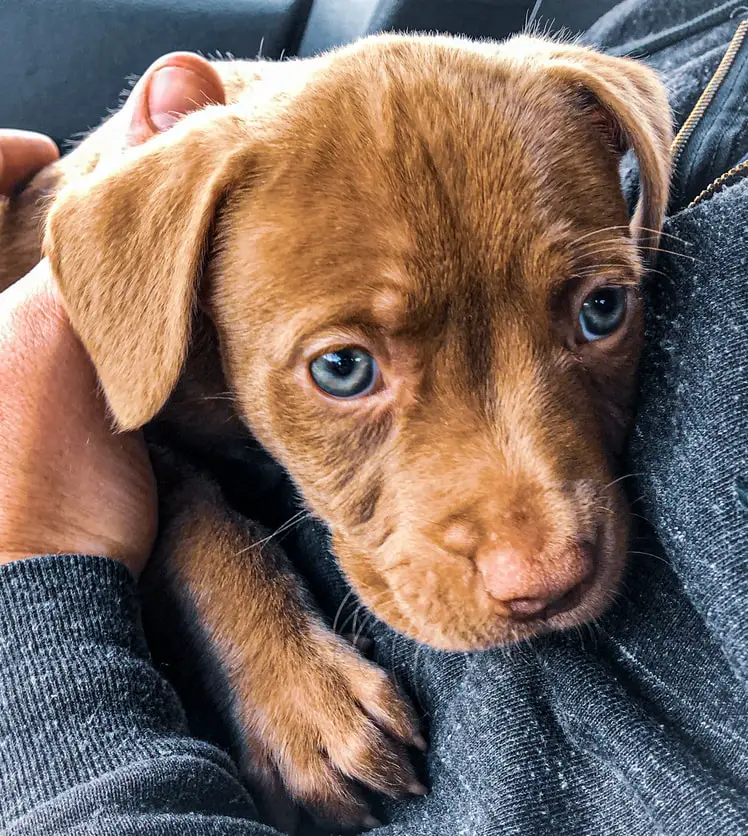Our website is supported by our users. We sometimes earn money when you click an affiliate link and make a purchase. This is at no extra cost to you and helps us to create quality content. Thank you for your support.
After much contemplation you decided to bring a puppy into your life! Puppies are adorable bundles of fun AND hard work. They will test your patience but in the end are worth every minute of your time.
In this Ultimate Guide: How To Take Care Of A Puppy, you can gather information on selecting a puppy breed, how to acquire a puppy, what to feed them, how to teach house training, and the differences in how to take care of a puppy rather than an adult dog or a senior dog.
You already know puppy’s need exercise, but how much is adequate? Learning how to take care of a puppy involves proper grooming and socialization.
Just like other babies, puppies can get sick. You’ll need to choose a veterinarian you can trust, learn about how to take care of a puppy, puppy illnesses and how to prevent them.
Enjoy the process of being prepared for your new “best friend.”
Related Articles:
- How to Train a Deaf Dog to Stop Barking
- How to Train Your Dog with Positive Reinforcement
- How to Crate Train a Dog
- How to Train Your Dog to Walk on a Leash
- How to Train Your Dog to be Social
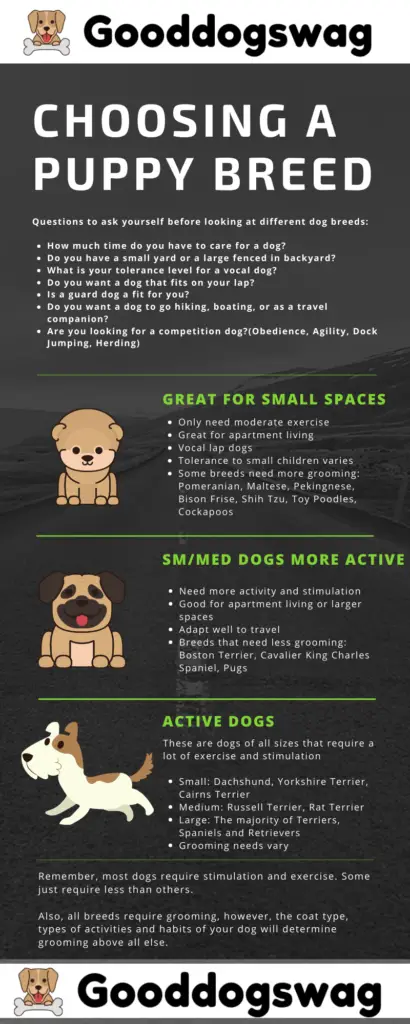
Choosing the Breed: Pick a breed that matches your lifestyle
Once you’ve decided to add a puppy to your life, you’ll want to carefully choose a breed that fits your life circumstances, budget, and energy levels.
A dog that is easy to train and socialize is a great beginning for the first-time dog owners. If you are more experienced at owning and training a dog, you might enjoy a more challenging breed of dog.
Additional questions to ask yourself before looking at different dog breeds:
- How much time do you have to care for a dog?
- Do you know how to take care of a puppy?
- Do you have a small yard or a large fenced in backyard?
- What is your tolerance level for a vocal dog?
- Do you want a dog that fits on your lap?
- Is a guard dog a fit for you?
- Do you want a dog to go hiking, boating, or as a travel companion?
- Are you looking for a competition dog? (Obedience, Agility, Dock Jumping, Herding)
There are over 200 recognized dog breeds to choose from; here is a sampling of dogs with their main characteristics. Choosing the right breed for you, will better equip you for how to take care of a puppy.
Related Articles:
- How to Cook Liver for Dogs
- How to Get a Picky Dog to Eat
- How to Stop Your Dog from Peeing When Excited
- How to Keep Your House from Smelling like Dog
- How to Measure a Dog for a Harness
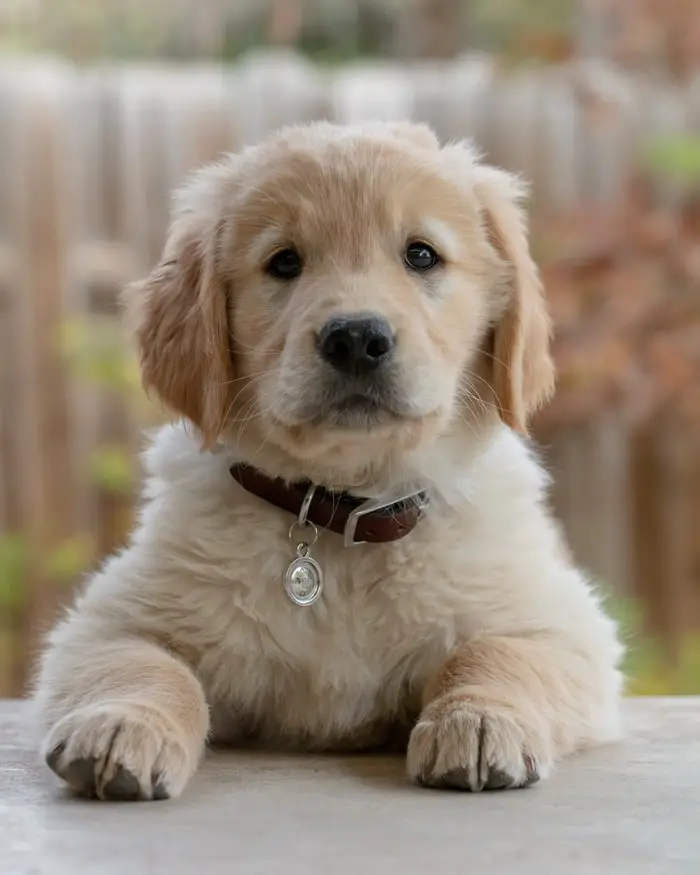
Dog Breeds at a Glance:
- Bison Frise, Shih Tzu, Toy Poodles, Cockapoos are small breedsthat are known to be gentle, affectionate, outgoing, love to be pampered, great with gentle children, require routine grooming.
- Boston Terrier, Cavalier King Charles Spaniel are smaller breeds that love gentle play, affectionate, easy to care for coats, and adapts well to travel. Pugs are outgoing, solidly build, silly, active little dogs, not suited for hot temperatures.
- Welsh Corgi’s are fearless, athletic dogs that were bred to herd cattle. Border Collie’s are active, athletic dogs that are bred to herd sheep. Both breeds require mental stimulation, they are sensitive and respond well to training.
- Labrador retrievers, Golden retrievers, Chesapeake Bay Retrievers, and Flat-Coated Retrievers are sporting breeds with easy going temperaments. They are strong energetic dogs that respond well to training. Plan on spending time every day exercising and training your retriever. Each retriever has its own unique grooming requirements.
- German Shepherds, Boxers, and Great Danes are from the working dog class and are suitable for guarding the family home. Well-bred German Shepherds are smart, confident and love training. Boxers are known for being bright and active dogs. Great Danes are friendly to family members and alert to strangers. They are patient dogs that don’t require as much exercise as other breeds in their class.
- Russell Terriers and Rat Terriers are clever, athletic dogs. They are a bold, independent bred that thrives on structured training. Problem solving and canine sports such as agility are perfect for this breed. They can be tolerant of children and reserved with strangers.
The above breed characteristics are based off a history of well-bred dogs. A thoughtful and educated breeder will be able to maintain breed integrity, which means the puppy you bring home will be a more predictable adult.
Related Articles:
- How to Get the Attention of a Deaf Dog
- How to Train a Deaf Dog to Sit and Stay
- How to Train a Deaf Dog with Hand Signals
- How to Potty Train a Deaf Dog
- Basic Dog Training Commands
Along with learning how to take care of a puppy, picking out the best dog breed for your lifestyle is important. Choose wisely and you will enjoy your canine companion for many years. Another option for choosing a breed is to explore adopting a puppy or grown dog either from a recognized rescue or the local shelter.
Adopting a Puppy vs. Buying from a Breeder
Deciding how you’ll acquire your puppy is another important decision. You could purchase a puppy from a reputable breeder or adopt from a shelter, humane society, or breed specific rescue.
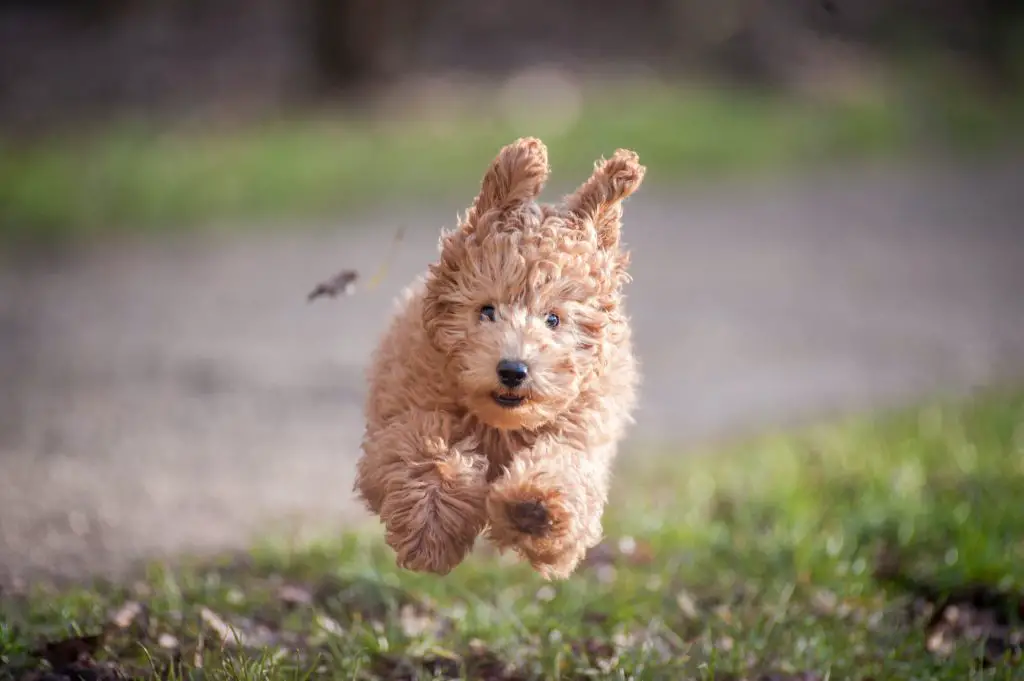
Adopting a Puppy
Shelters and rescues provide temporary housing for puppies and dogs without a home. Animals can find shelter, protection and have clean food and water. Many shelters provide exercise, enrichment toys for the dogs, and know how to take care of a puppy.
Animals are often brought to a shelter due to previous human cruelty, previous owners found they could not manage the dog, or they didn’t know how to take care of a puppy. And, in rare cases it’s due to the owner passing away and the dog has no one to care for it. Ask about any known history with the dog that piques your interest.
Dogs that have a bite history find themselves in the shelter as well. A responsible shelter will do a full screening on the potential home and temperament testing on the dog to make the adoption experience successful.
Rescues are often funded privately, and the animals are cared for in a foster home setting. Breed specific rescues will take and care for a specific breed, such as a Golden Retriever Rescue.
Foster homes work hard at acclimating the dog to both inside the home and outdoors. They will take time to exercise, train and know how to care for the puppy. Often in breed specific rescues, the care takers are knowledgeable about the breed and train accordingly.
In both situations, the animals are given veterinary care, evaluated and often temperament tested.
Related Articles:
- How to Properly Carry a Dog
- How to Treat a Dog Ear Infection at Home without a Vet
- How to Play with Your Dog
- Rules of How to Walk Your Dog
- A Review Of The Top 5 Best Salmon Oils for Dogs
Adopting a Puppy/Dog
Benefits from a Quality Shelter:
- Providing a home for a homeless puppy or dog
- If the dog is full grown; you will know their size, temperament, and appearance
- You can interact with the puppy before making a decision
- Affordable
- If you adopt a full-grown dog, you don’t have to learn how to take care of a puppy, you can skip the house training and teething stage.
- Often the dog is spayed or neutered before adopting.
Cons:
- If the puppy is a mix of breeds, you can take a guess at the breed temperament.
- Health history might be unknown
- Irresponsible breeding could leave the puppy with behavioral issues.
- Potentially more time is required for the puppy to adjust (due to stress)
- Some rescues require home visits for puppy adoptions

Buying a Puppy from a Breeder
Quality breeders will focus on maintaining the breed standard and early puppy development. The importance of keeping a breed standard is to have dogs that are healthy, have a characteristic appearance, and can do the job they were bred to do.
Breeders will register their puppy litters with the American Kennel Club (AKC). The AKC is the “world’s largest database of canine DNA for the purpose of parentage and genetic identity”. They use this DNA for the preservation and advancement of purebred dogs.
Reputable breeders wait until the females are at least two years old to allow the dog to develop physically and to see their temperaments. X-rays and DNA testing is required before breeding. Breed specific testing is done to rule out inherited disease, such as hip dysplasia and blindness.
Related Articles:
- The Best Canned Dog Food for Dogs with Sensitive Stomachs
- A Review Of The Top 5 Best Tactical Dog Harnesses
- How to Build an Outdoor Dog Potty Area on Concrete
- A Review of the 5 Best Dog Muzzles
- A Review Of The Top 5 Best Dog Clickers
Purchasing a Puppy/Dog
Benefits of a Quality Breeder:
- Breeders run tests on the dog’s hips, elbows, eyes, hearing, thyroid, heart and DNA.
- Purchase the breed that meets your needs or purposes (dog sports, working dogs, lap dog)
- Known parentage and health history.
- Often a lifetime relationship with the breeder; they answer breed specific questions and take back any puppy, whatever the reason.
- Early puppy development (sound desensitization, early grooming, exposure to different surfaces and people groups, etc.)
- Puppy has been dewormed, had a vet check-up and given their first vaccination.
- Most breeders start potty training and getting puppy familiar with the dog crate.
- Breeders will temperance test and pick the right puppy with you.
Cons:
- Not all breeders are ethical; and some operate strictly for the money
- Breeders might not have performed any early puppy development or environmental exposure.
- Expensive
- Breeders that want to save money don’t deworm or have a veterinary check-up.
- May release puppies to the new owners during a crucial development stage, before puppy reaches 8 weeks old.
In order to make the difficult decision of whether to adopt from a shelter versus purchase from a breeder, you’ll want to evaluate your time, purpose, budget and lifestyle. Another step in learning how to take care of a puppy is nutrition.
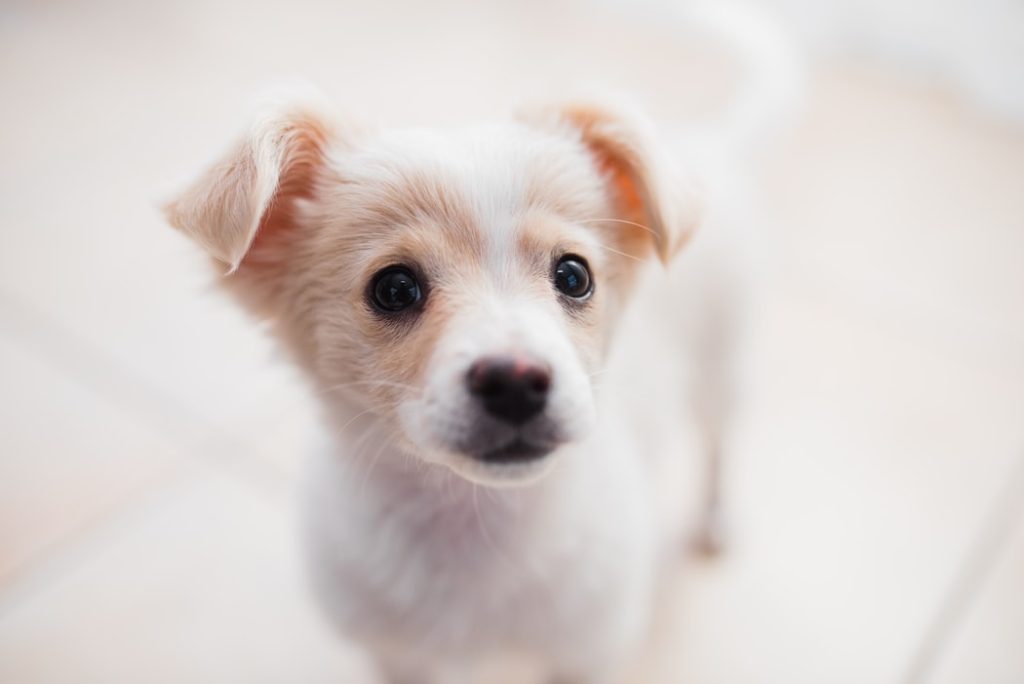
How To Take Care Of A Puppy with Food and Nutrition
Before bringing your puppy home, you will want to purchase dishes and puppy food. When possible, gain as much knowledge about your breed of puppy. You will learn how to take care of a puppy and make your choice of puppy food based on the breed requirements.
Related Articles:
- How to Cook Marrow Bones for Dogs
- A Review Of The Top Five Best Foods for Hiding Dog Pills In
- A Review of the Top 5 Best Dog Bones For Aggressive Chewers
- A Review Of The Top 5 Best Bone Broths for Dogs
- A Review Of The Top 5 Best Dog Whistles
The Importance of how to take care of a puppy and proper nutrition:
- Healthy growth rate; not too fast or too slow
- Immune system function: the ability to fight disease
- Healthy weight; not over or under weight.
- Avoid developmental orthopedic disease
Most puppies are completely weaned from their mother at eight weeks of age. At the point of weaning, the puppy’s protein requirements are at their highest. As the puppies develop, protein requirements decrease.
- Proper nutrition is crucial for developing immune systems and body composition.
Nutrition
When learning how to take care of a puppy and choosing puppy food, you’ll want to focus on four key nutrients: protein, fat, calcium, and digestible carbohydrates.
- Protein: the appropriate range for puppies is between 22-32% (depending on the breed) Puppy’s thrive on animal-based protein sources.
- Fat: is a concentrated source of energy for dogs. Fat helps the body absorb fat soluble vitamins, like A, D, E & K. Dogs need both omega-3 and omega-6 fatty acids in their diet.
- Calcium: is essential for neuromuscular, cardiovascular, and immune function. Puppies need a careful balance of calcium & phosphorus. Phosphorus forms the bones and teeth. The ratio of calcium to phosphorus is 1:1 – 1:3. (Example: Calcium 1.5% and Phosphorus .95%). Calcium can be slightly higher.
- Digestible carbs: are easily absorbed by the dog’s digestive system. Healthy carbohydrates in dog food could be barley, whole wheat, whole oats, brown rice, sweet potato, and millet.
Dogs eat mainly meat; however, they are not strict carnivores, they can eat healthy grains, organ meats (such as liver), select vegetables and select fruits as part of a balanced diet.
Related Articles:
- Ultimate Guide: How To Take Care Of A Dog
- Ultimate Guide: How To Take Care Of A Senior Dog
- The Benefits of Owning a Dog
- Top 12 Tips for First Time Dog Owners
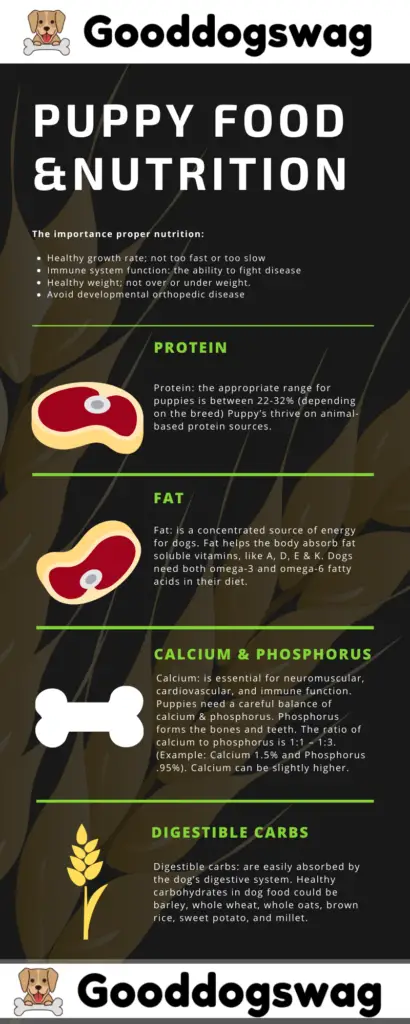
Puppy Feeding Schedules
An important aspect in learning how to take care of a puppy is adjusting their schedule. The feeding schedule you chose for your puppy will be based on the breed. Breeders usually give recommendations on how to take care of a puppy and the type of puppy food, frequency of feedings and amount to be fed.
When adopting from a shelter or rescue, they might make recommendations for you as well.
Sample Feeding Schedule:
Ages 8-12 weeks: Feed 4x’s a day (Example: 8am, 12pm, 4pm, 8pm)
Ages 3-6 months: Feed 3x’s a day
Ages 6-12 months: Feed 2x’s a day
After age 1: 2x’s a day
Keeping your puppy on a feeding schedule will benefit them as they grow and mature. The frequency of feeding during the first 8-12 weeks aids in keeping even blood sugar levels in a growing puppy.
Amount of Food
When learning how to take care of a puppy, the amount of food you feed your puppy is based on the breed standard and puppy’s age. Give careful attention to your puppy’s body condition to determine their portion size.
- Ask your veterinarian if you need further guidance in this area.
Types of Dog Food
You’ll want to choose a dog food that fits your budget. Keep in mind, premium food equals higher nutritional density.
Dogs from the sporting class (retrievers, spaniels, pointers) and working class (Alaskan Malamute, Great Pyrenees, Boxers, Mastiffs, Bernese Mountain dogs) need a certain standard of dog food to mature properly and live a healthy life.
Related Articles:
Six Forms of Dog Food:
- Canned food
- Semi-moist food
- Kibble – the most economical choice
- Freeze-dried raw food
- Dehydrated food
- Homemade cooked or raw food
You can choose from any of the options above based on their nutritional content, your budget, your dog’s nutritional needs and your available time.
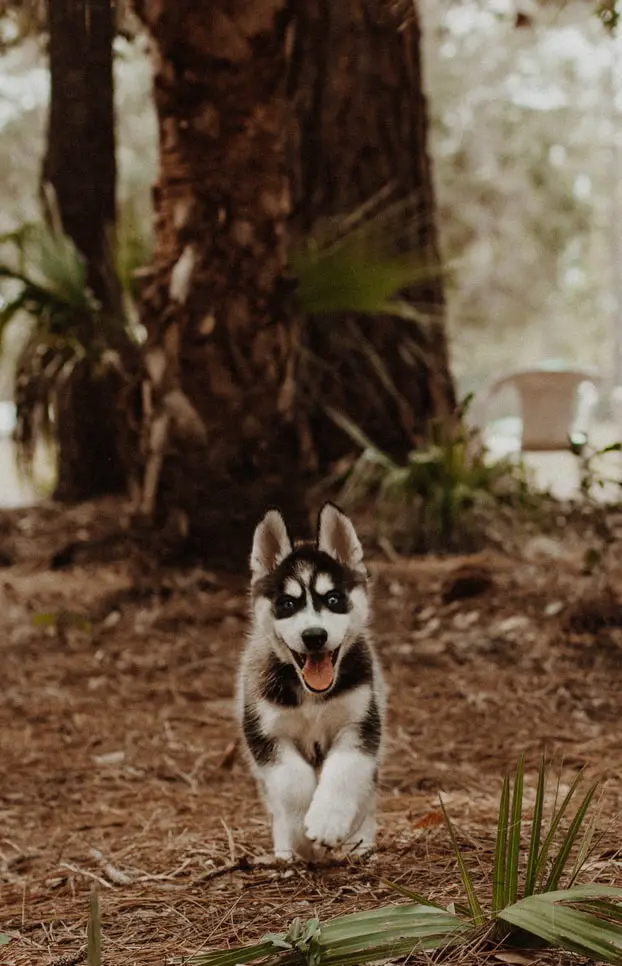
FAQ on How To Take Care of a Puppy and Feeding And Nutrition
How do I know when my pup is officially an adult dog?
When your dog reaches 90% of its expected adult weight. Depending on the dog breed, most dogs switch from puppy food to adult food somewhere between 9 months old and 12 months old. Giant breeds could take an additional several months.
Related Articles:
- How to Train a Dog to Run Next to a Bicycle
- How to Teach an Older Dog New Tricks
- How to Train a Deaf Dog
- The Top 12 Fun and Easy Dog Tricks
- How to Train a Dog
How do I switch from puppy food to dog food?
Most dogs have a sensitive system, in that they produce the type of enzymes and acids appropriate to digest the food they are eating. When switching dog food, you’ll want to go slowly and gradually, as their system will be making adjustments.
One way of how to take care of a puppy is to keep them on a feeding schedule, which will also keep them on an elimination schedule. House-training or potty training will go smoother for you and the new puppy.

How to Take Care of a Puppy and House Training
House training begins the moment you pick up for your puppy. In order to be successful, it will take planning and being consistent on your part. When learning how to take care of a puppy, you will develop a new habit of taking your puppy out frequently for the next four months.
Keep in mind, puppies take approximately 20-30 weeks to develop bladder control. This varies from dog to dog and breed to breed.
5 Tips for Successful House Training
- Designate a puppy safe area in your home; either by using a crate and/or gating off rooms in your living space.
- Walk outside with your puppy to show them where to eliminate, don’t leave it up to them.
- At the beginning of house training, use a leash outside to keep them focused on the task.
- Always supervise your puppy.
- Set a timer, if needed, to help you get in the habit of going out every 10-15 minutes.
Puppy house training is not hard, it’s more of being aware of your puppy every moment they are awake. An important aspect when learning how to take care of a puppy. If you are unable to tend to them, place them in their safe area or dog crate.
It may take your puppy anywhere between two days up to two weeks to know where to eliminate. Again, patience and persistence.
Related Articles:
- How to Obedience Train Your Dog
- How to Leash Train Your Dog
- How to Get Rid of Dog Warts at Home
- How to Housebreak or Potty Train Your Puppy
- How to Clicker Train Your Dog
Know the Signs
Puppies usually give us a few seconds notice when they need to urinate or defecate. Although there are times that they will squat right in the middle of play.
Exercise or movement often triggers the need to eliminate. Here are other signs that your puppy needs to go outside:
- Wandering away from the area where they were playing
- Circling while sniffing
- Looks distracted
- Sniffing at the floor or carpet
- Looking at the door or pacing near the door
- Beginning to squat
- Wandering over to an area they had previously eliminated
Keep in mind, it’s not the puppy’s fault they have to go. House training is all part of learning how to take care of a puppy. We need to be consistent on teaching them the proper location and noticing their indications.
Take your puppy outside:
- After several minutes of play
- When they wake up from sleeping or napping
- Before and after car rides
- After greeting a family member or friend
- Before and after training sessions (or formal training)
- After eating or drinking
- Before and after putting them in their dog crate
Reinforce your puppy with lots of praise when they eliminate outside.
FAQ on How To Take Care of a Puppy and House Training
Whether this is your first time bringing a puppy home or it’s been a long time since potty training a puppy, you might relate to these common questions.
Q: How should I respond when my puppy begins to urinate or defecate in the house?
- If you “catch” them in the act, make a startling noise and move them outside immediately. Often the noise will make them pause with enough time for you to get them outside. If they have completed the act, take them out anyway.
Q. What is the best way to clean up messes inside the house?
A. Use cleaning supplies that do not contain bleach or ammonia. Many household cleaners contain ammonia which closely resembles the scent of urine to a dog. Thoroughly cleaning the accident spots with an enzymatic cleaner will eliminate lingering odors.
Q. Will my puppy eliminate in his dog crate?
A. Generally dogs do not like to soil their sleeping area. If an accident happens, clean it up and take them out sooner.
Q. My puppy was successful for many weeks, now they have regressed, what is wrong?
A. Puppies have ups and downs as they mature. Monitor their water consumption and be consistent with taking them outdoors. If it persists, have them looked at by your local vet to rule out any health issues.
Q. What about using doggie diapers?
A. If you rescued or adopted an older dog, they might not be housetrained. Doggie diapers could be used in case an accident occurs. They are also handy as a back-up when visiting friends and family. You still need to be diligent about training them to go outdoors.
Q. Does using a “potty bell” increase my success?
A. Some dogs and owners do very well with a bell. The dog will ring the bell when they need to be let outside to eliminate. This system works well for travelers as well because you can bring the bell with you. The bell becomes more guesswork when you have a smarty dog that will ring the bell for attention or just to go outside to play. Using a bell system is up to the individual dog and owner.
Related Articles:
- A Review of the 5 Best Waterless Shampoos for Dogs
- A Review Of The Top 5 Best Halloween Costumes for Dogs
- How to Stop a Dog from Pooping in the House at Night
- How to Potty Train an Older Dog in an Apartment
- How to Grind Your Dog’s Nails
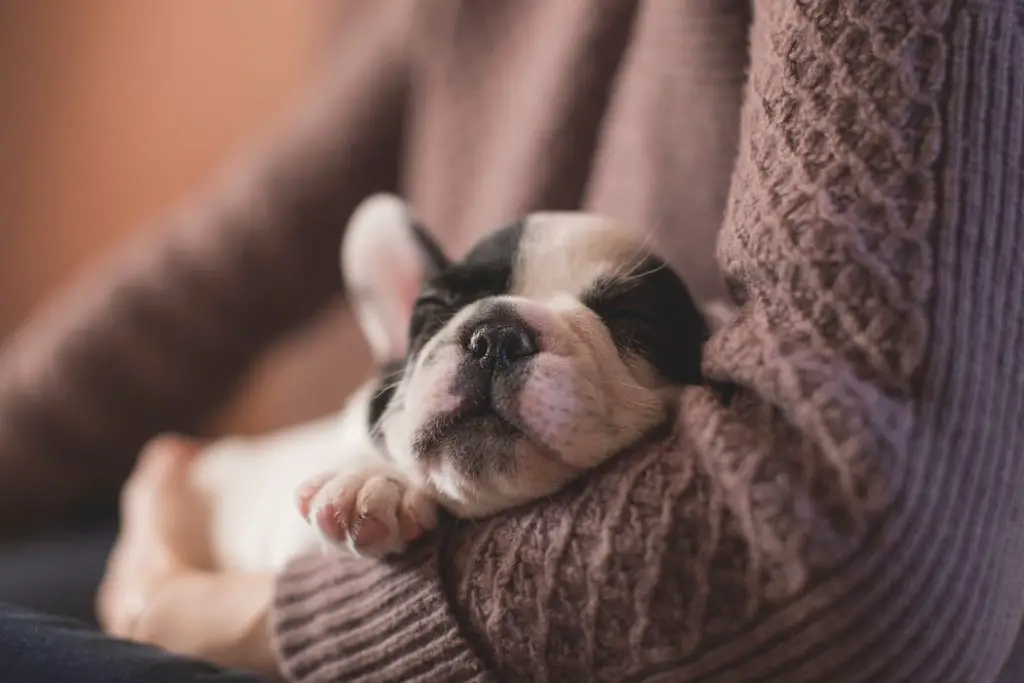
Q. When will my puppy sleep through the night?
A. It really depends on the size and breed of your dog. Generally, 8–12-week-old puppies can go approximately four hours at the start of housetraining. Continue to take them out right before you go to bed at night. Sometime between 12-16 weeks, they will extend that time to 6 hours and eventually 8 hours.
Each puppy and dog have their own individual characteristics, which plays a part in how quick or long it takes for them to grasp the concept of where to eliminate.
Remember: Verbally reprimanding your puppy only teaches them not to eliminate in front of you. As humans, we can do our part by being consistent, timely and patient!
How To Take Care of a Puppy and Exercise
Exercise is vital to learning how to take care of your puppy Your new puppy not only needs exercise, but it will also thrive on daily exercise, play, and mental stimulation.
- Both mental exercise and physical exercise are important for a happy, healthy puppy!
Physical exercise can be done in many ways, in the form of informal play, intentional puppy games or structured activities like walking and swimming.
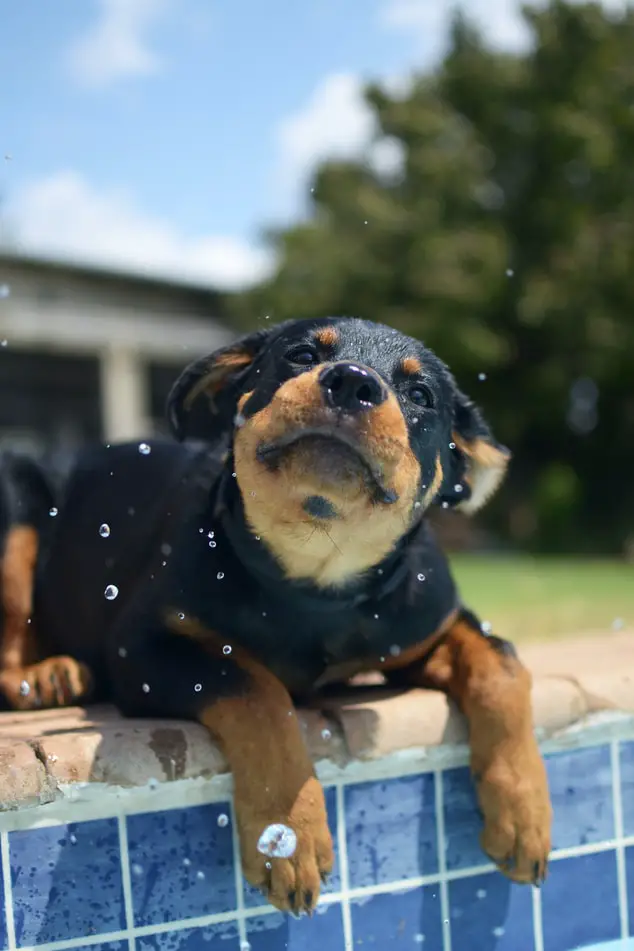
How To Take Care of a Puppy and The Value of Play
Play is one of the keys to your puppy’s well-being. Allowing your puppy time to play will head off many behavior issues in the future, such as jumping, chewing, and whining.
- Puppy appropriate toys will be beneficial for both dog and owner.
Your puppy will be able to stay physically and mentally fit when given the opportunity to make play part of their routine. Dogs are known to try to extend play time when possible; whether it’s playing with their human or another dog in the family.
Play can be a great workout, teach manners, and relieve stress (for both human and dog.)
Relevant Articles:
- How to Stop a Dog from Pooping in the House at Night
- How to Potty Train an Older Dog in an Apartment
- How to Grind Your Dog’s Nails
- How to Get a Dog To Take a Pill
- Learn The Secrets Of How to Clip a Dog’s Nails Safely!
How To Take Care of a Puppy and Physical Exercise
When learning how to take care of a puppy, you will find that dogs each have different exercise requirements based on their breed and individual needs. Labrador retrievers, Terriers, and Spaniels are just a few breeds that need adequate daily physical exercise.
Dogs with short snouts, such as the Pug and French bulldog find it harder to breathe with rigorous exercise. Dogs that have been predisposed with hip and joint issues will need to take care with jumping and endurance activities.
Your puppy is growing and developing for up to 24 months. Smaller breeds often reach maturity and are fully developed by one year of age. Large and giant dog breeds grow until they are 18-24 months of age.
What kind of physical exercise is healthy for my puppy? Walking, hiking, and swimming with their human are all excellent forms of exercise.
How much physical exercise does my puppy need? It really depends on your breed. As a general guideline, your puppy can increase their exercise time by 5 minutes per month of age, up to twice a day. Example: a 4 month old puppy, should aim for 20 minutes of exercise. Keep in mind some physical exercise uses more energy, such as hiking.
How To Take Care of a Puppy and Cautions with Exercise
Overheating. Puppies under the age of six months can overheat much quicker then mature dogs. When choosing to exercise, check the air and ground temperature to make sure your puppy doesn’t overheat. Plan on taking short breaks and providing shade and water for your dog.
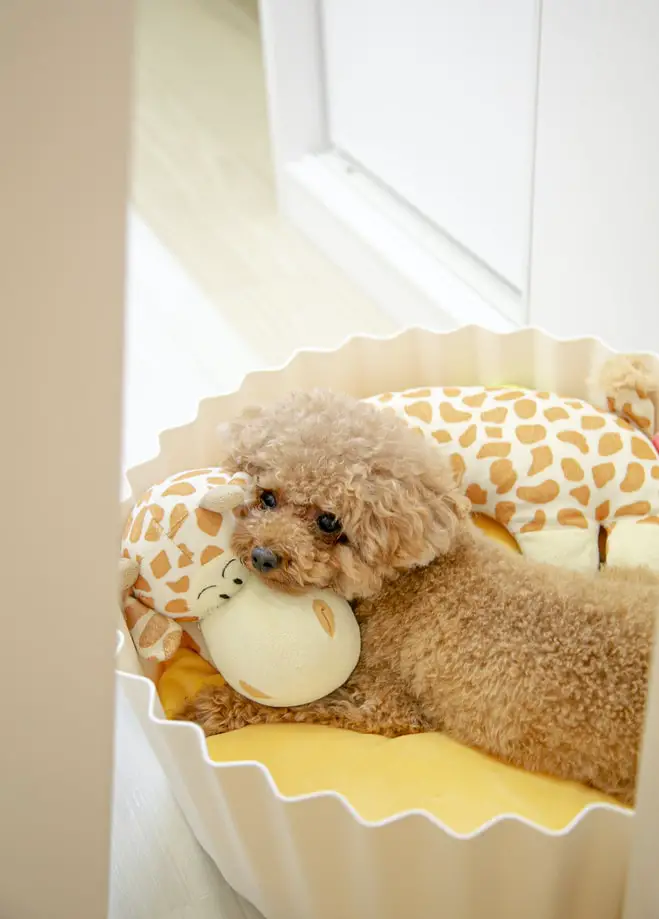
Rest After meals. Dogs and puppies all need to wait at least an hour and up to two hours after eating. Deep chested breeds, such as Akitas, Bassett hounds, German Shepherds, & Great Danes are just a few breeds that will need to wait at least two hours after eating.
Forcing Exercise. Running, biking, and excessive ball throwing could all be considered forced play with your dog. Some dogs know when they are done with exercise, they might be overheating, tired, bored, or other various reasons. Be ready to stop when your dog is tired.
- Always watch for signs of fatigue in your dog. Signs may include increased panting (with the tongue hanging out to the side), slowing their pace, or stopping all together.
Related Articles:
- A Review Of The Top 5 Best Carpet Cleaner Solutions for Dog Urine
- A Review Of The Top Best Silent Dog Whistles
- A Review Of the Top 5 Best Artificial Grasses For Dog Potty
- A Review of the Top 5 Best Dog Carrier Backpacks
- A Review of the 5 Best Dog Frisbees
How To Take Care of a Puppy and Mental Exercise
Care for your puppy by tiring them out with good mental games! There are several mentally challenging games you can engage in with your puppy. Quiet mental games can be of great value as well.
Fetch. The oldest form of mental exercise is “fetch”. You can begin indoors by giving value to the item you would like them to fetch. Bounce it up and down and make it look like loads of fun! Toss the item a short distance away and call them back to you. At first you might need to take the item back until they get the idea that more fun happens when they bring the item back to the human. As you and your puppy get better at the game, you can extend your distance.
Find It. Choose a favorite toy or high value treat. Show your puppy the item and then place it a few feet away from the puppy. Then say, “Find it”. Once you think they have grasped that step, keep extending the distance. Eventually you can hide it under a bowl or place it in a different room. Always have them begin at the same place each time, such as a small rug or dog bed.
Food Stuffed Toys. Quiet mental exercise is just as valuable!! Choose an appropriate style toy that is designed to be stuffed with food. Kong, West Paw, and Starmark are a few brands that make a variety of sizes and styles. You can mix a little kibble in with canned pumpkin or a banana and stuff it into the toy. Freeze it. Bring out the toy on rainy days or busy mornings. Anytime you would like them to keep mentally busy. As with any toy, supervise your puppy.
Mental and physical exercise is an important part of your puppy’s routine. Another area that will contribute to a happy and healthy puppy is regular grooming.
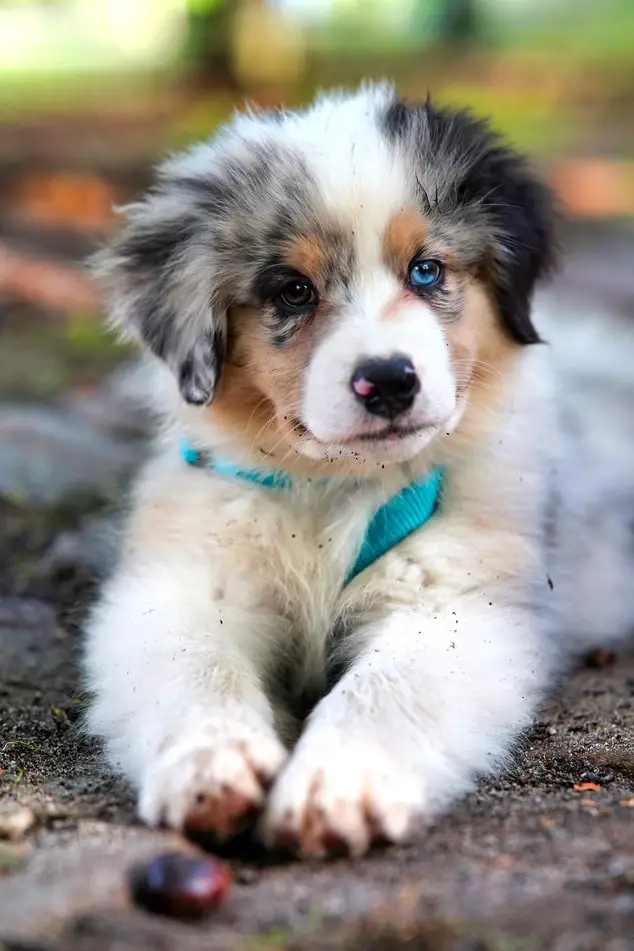
How To Take Care of a Puppy and Grooming
Your puppy relies on you to feed them, exercise them, and also take care of their physical grooming needs. Grooming entails coat maintenance, cleaning ears, checking eyes, checking teeth, trimming toenails, and cleansing the body and coat.
How to take care of your puppy’s grooming needs: First, you’ll want to know your puppy’s hair type. There are 6 different types of dog coats with variations among the double coated breeds.
6 Dog Coat Types
- Nearly hairless – Chinese Crested
- Smooth/Short Coated – Dachshund
- Wire Coated *- Irish Wolfhound
- Long Coated – German Shepherd
- Double Coated – Bernese Mountain Dog
- Curly Coated – Poodles
*Wire coated breeds may require professional grooming
When should I begin grooming my puppy?
The very first day you bring them home.
Tips for the Successful 1st Time Grooming
- Keep your grooming sessions short
- Practice handling their feet, toes, nails, lifting their paws, looking in their ears and mouth.
- Begin with a short brushing session and praise your puppy when they stand still
- Use a lick mat or favorite treat as you brush or bath your puppy
- Remember to put down a slip-proof mat on the bottom of your tub before bathing.
Goal: Teach your dog to love grooming!
Your new puppy might squirm or complain the first time you touch their feet or brush their coat. Take a deep breath and praise them for any moment they are quiet and still.
Grooming Equipment
- Brush and/or Comb
- Scissors and/or trimmers (not all breeds need these)
- Nail trimmers, file and/or a nail grinder
- Mild dog shampoo – designed specifically for puppies
- Round cotton pads & Witch Hazel
- Styptic powder
- Teeth cleaning brush or spray
- Microfiber towel
Scissors and trimmers are necessary for those breeds that have hair that needs to be trimmed around their eyes, anus or mouth.
Cleansing pads and witch hazel are for gently cleaning in and around the ear.
Styptic powder is great to include in your dog first aid kit. Should you trim a nail too short, or they break a nail during play, styptic powder will stop the bleeding.
Related Articles:
- A Review of the Top 5 Best Brooms For Dog Hair
- A Review of the 5 Best Peanut Butters for Dogs
- A Review of the 4 Best Dog Shampoos for Itchy Skin
- A Review of the 5 Best Dog Brushes For Short Hair
- A Review of the 6 Best Dog Harnesses for Hiking
FAQ on How To Take Care of a Puppy and Grooming
When should I begin cleaning my puppies’ teeth?
The first week they are in your home. You’ll make it part of your routine grooming. Ask your veterinarian for suggestions on cleaning your dog’s teeth. Some use a dog toothbrush, dental spray, dental chews or even just wiping down their teeth.
- Routine grooming is key!
Why should I bathe my dog?
- cleans their skin and coat
- removes loose hair and dirt
- allows you to examine their skin closer
Why is trimming my dog’s nails crucial to their health?
Your dog’s nails are an extension of their foot and leg. When the nails are too long it sets off the whole body. Dogs will have the feeling of walking uphill and it will decrease their balance.
Long toenails lead to long term degenerative changes and pain. The dog will experience pain in their knees, hips, and joints. You might see the dog begin to arch their back to compensate.
You’ll be off to a great beginning with establishing a regular routine for brushing your puppy. Remember to prioritize nail trimming. When learning how to take care of a puppy, professional groomers can advise on the grooming necessary between visits.
You’ll have your puppy looking and feeling their best!
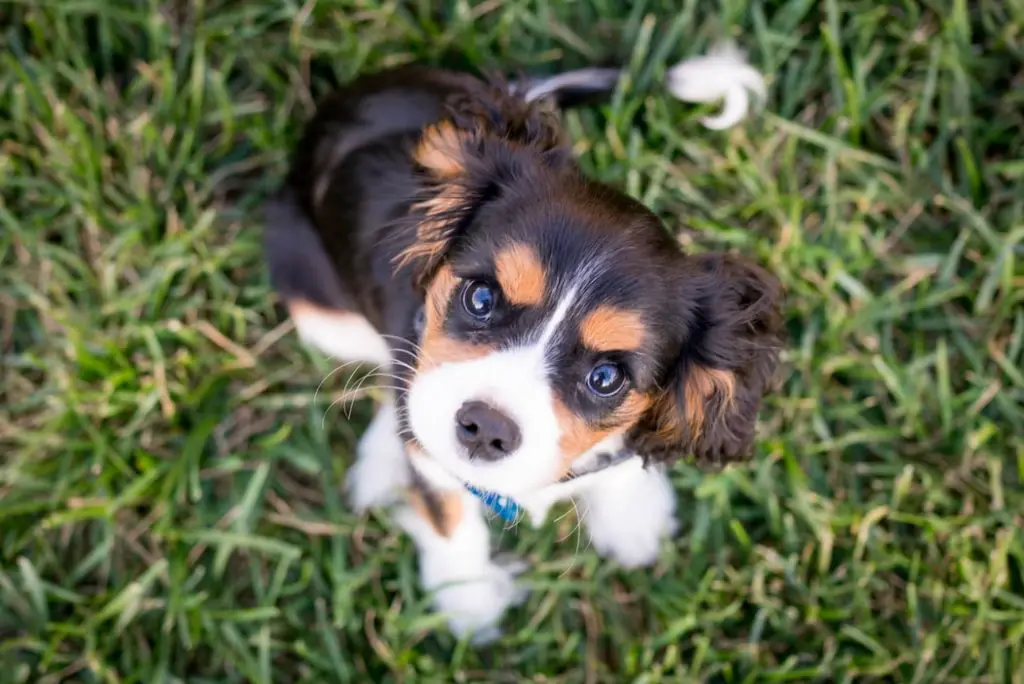
How To Take Care of a Puppy and Socialization
We all want friendly, confident adult dogs that adapt well to their surroundings.
It’s our job to introduce new sights, sounds, objects, and people to our new puppies. Puppies have so much to explore!
FAQ on How To Take Care of a Puppy and Socialization
At what age should I socialize my puppy? Right now! A puppy’s brain is still developing until the age of 5 months and changing up to two years of age. A puppy’s first year is the most crucial time for socialization.
As humans, we often have a misguided notion of what defines puppy socialization. It’s only natural that we use the same definition for human socialization.
- Puppy Socialization can be simply defined as giving your puppy careful, positive exposure to anything they might encounter as an adult dog.
What should Puppy Socialization include?
- Exposure to different types of animals (cats, birds, horses)
- Walking on a variety of surfaces, such as sand, tile, pavement, carpet, grass, wood floors
- Seeing different buildings and structures
- Keeping focus on you in a crowd of other humans
- Groomer’s shop and grooming tools/sounds
- Seeing different sized dogs
- Encountering dogs with floppy ears, pointy ears, flat faced
- Variety of sounds: a baby cry, horn honk, sirens, doorbell, kitchen appliances
- Encounter people in wheelchairs and children in strollers
- People with ball caps on, hoods, and wide-brimmed hats
Take your puppy camping or explore the woods. The sights, sounds and smells will social your puppy and tire them out!
- Formal puppy training classes at your local kennel club are an excellent way to safely social.
When learning how to take care of a puppy, you will find that your young dog needs to learn that seeing or being approached by a new dog is a fun experience, not a scary one. Structured one on one greetings are the best. Your puppy will learn the rules of polite canine encounters (with your supervision).
- The key is to stimulate your puppy not overwhelm your puppy. The most common mistake people make when learning how to take care of a puppy is taking their puppies to an environment that is too frightening.
The most important goal with puppy socialization is to condition your dog to enjoy strangers, big/small people, tiny/large dogs, all kinds of sounds and new environments.
Learning how to take care of a puppy continues with choosing a veterinarian, knowing common puppy illness and deciding what vaccinations your puppy needs his first year.

How To Take Care of a Puppy and Identifying Common Puppy Illnesses
It’s a joy to bring a puppy home and show them off to friends and family. Keep in mind your puppy is still developing their immune system and they may be susceptible to common canine illnesses.
- Choose a veterinarian, learn about common puppy illnesses, and take preventive steps.
First, when learning how to take care of a puppy, choose a veterinarian before bringing your puppy home. Veterinarians will have excellent knowledge on how to take care of a puppy.
Ask your network of family, friends and neighbors for vet recommendations in your area.
Related Articles:
- A Review of the 5 Best Slow Feed Dog Bowls
- A Review of the 5 Best Retractable Dog Leashes
- A Review of the 5 Best High Fiber Dog Foods For Anal Gland Problems
- The 5 Pawsitively Best Dog Nail Grinders
Five recommended questions to ask while making the best choice for you and your new dog:
- Call ahead, are they accepting new patients?
- What size animals do they see? Does it include canines?
- Does it fit your budget? Ask about examination, vaccinations, and routine care fees.
- What are the emergency policies?
- Will physical examinations be in a written form for each visit?
How To Take Care Of A Puppy and the 3 Most Common Major Puppy Illnesses
Parvovirus “Parvo” – This puppy disease is common. Puppies under the age of four months are the most vulnerable. Symptoms include bloody diarrhea, lethargy, loss of appetite, and vomiting. See your vet promptly if you suspect your puppy has this disease.
Canine Distemper Virus – This disease can affect young puppies. It can be passed through infected water dishes, food, or equipment. Symptoms include weakness, lethargy, yellow-colored diarrhea, and trouble breathing. Distemper can be fatal and leave your puppy with permanent neurological damage. See your vet promptly!
Kennel Cough – This disease can affect both puppies and adult dogs. It’s a common canine infectious respiratory disease caused by viruses and bacteria. Symptoms include lethargy, sneezing, dry cough, and vomiting liquid. Call your vet for recommended treatment.
How To Take Care Of A Puppy and the 3 Most Common Minor Puppy Illnesses
Colitis – is inflammation of the colon caused by stress, infection, ingesting a contaminated item, or inflammatory bowel disease. Puppy may suffer from diarrhea, straining during defecating, or have bright bloody poop. Call you veterinarian for an examination and diet recommendations.
Urinary Tract Infection (UTI) – is an infection of the urinary tract. It’s most caused by bacteria. Your puppy might have more frequent accidents in the house, cloudy urine, licking around the genitals or even be running a temperature. Offer your puppy plenty of fresh water and call your veterinarian for further advice.
Allergies – are a reaction to allergens by the body’s immune system, resulting in itchy skin and runny nose. Dogs can have flea allergies, food allergies, or environmental allergies. If your puppy shows symptoms of face swelling, vomiting and/or chronic ear infections, talk to your veterinarian promptly.
Several common puppy illnesses may be prevented with vaccinations administered by a reputable breeder or your veterinarian.
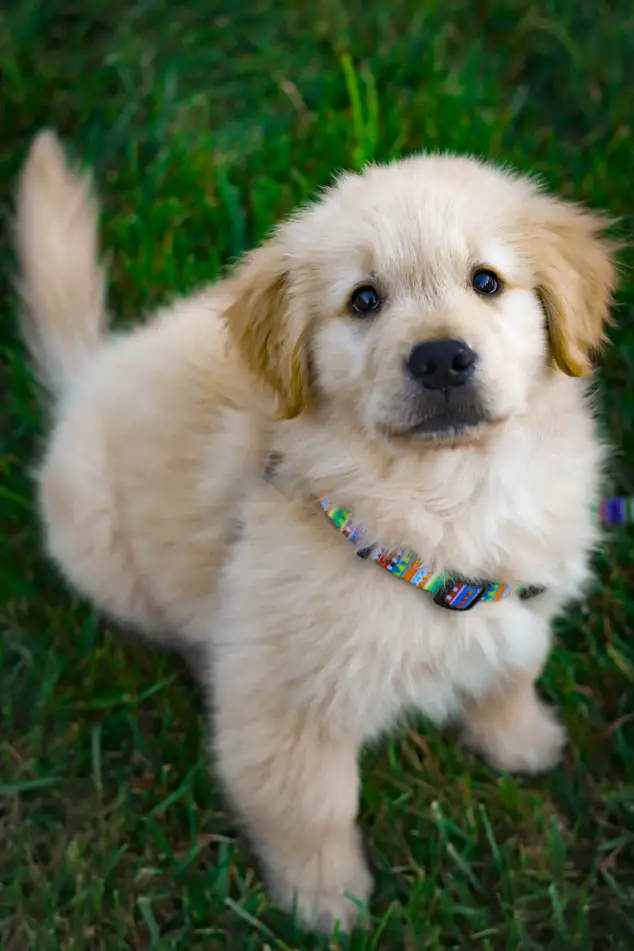
How To Take Care of a Puppy and Vaccinations
At your puppies first well-visit to the veterinarian, they will weight your puppy, ask for a fecal sample and make recommendations for puppy vaccinations. Next in learning how to take care of a puppy, you’ll want to learn about the core vaccinations.
5 Common Puppy Vaccination Recommendations
DHPP – combination vaccination that includes Distemper, Hepatitis, Parainfluenza, Parvovirus. This is the first combo vaccine your puppy will receive between the ages of 6-8 weeks. They will receive a booster before 12 weeks of age.
Rabies Vaccination – is a viral disease of mammals that invades their central nervous system. It is often transmitted by the bite of an animal with rabies. Rabies is a zoonotic disease, meaning it can affect both humans and animals. Puppies receive their first vaccination between 12-16 weeks old.
- The United States requires all dogs receive a rabies vaccination. The booster requirements vary state to state.
4 Non-Core Vaccinations
When learning about how to take care of a puppy, discuss your lifestyle with your veterinarian to see if one of these optional vaccinations would benefit you and your puppy.
Leptospirosis Vaccination – referred to as “Lepto” is a type of bacteria that can be shed by wildlife and is commonly found in standing water. Lepto is an optional vaccine, however you may discuss the benefits with your veterinarian. This vaccine is given for puppies over 12 weeks old.
Bordetella Vaccination – also known as the kennel cough vaccine. It’s a contagious virus between puppies and adult dogs that give respiratory symptoms. Bordetella vaccine is optional; however, you might discuss options with your veterinarian if you plan to board your dog or take them to dog day care.
Influenza Vaccination – the dog flu is a highly contagious respiratory disease caused by canine influenza virus. The United States has two strains that affect dogs. This vaccine is optional; however, discuss options with your vet if you plan to board your dog.
Lyme Vaccination – Lyme’s disease is caused by bacteria carried by the black legged ticks or “deer” ticks. This disease is more prevalent in tick infested areas. Vaccination is recommended if your dog is at high risk for exposure.
How To Take Care of a Puppy and Investing in Pet Insurance
Owning and caring for your puppy can be costly and keeping up with routine vet exams and preventative care could put a strain on your budget.
Pet insurance may save you thousands of dollars if your pet gets sick, gets injured or needs emergency surgery. It’s important to make this decision before your dog gets sick or injured.
- The first pet insured in United States was Lassie, the famous television dog-hero in 1982.
Select your plan based on what you would like covered. You may ask about reimbursement or coverage for the following:
- examination fees
- wellness and preventative care
- dental health
- emergency surgery
- special Rx diets
- hereditary conditions
- end of life care
FAQ on How To Take Care of a Puppy and Pet Insurance
Q. Does my puppy need a vet exam to qualify for insurance?
Yes, your puppy will need a thorough examination from a licensed veterinarian.
Q. What medical records do you need to enroll?
You’ll want to include any previous visits to the vet, laboratory results, and vet notes.
Q. Does pet insurance cover pre-existing conditions like hip dysplasia?
It will depend on the insurance company. Most insurance companies will provide insurance for a dog that is less than six years of age, and they have no clinical signs and symptoms at the time of enrollment.
Q. What is the range of monthly payments for pet insurance?
The cost of pet insurance will depend a lot on the age of your pet, breed, health condition of dog and what you would like your insurance to cover. It can be as low as $15/month and up to $98/month.
Top 5 Pet Insurance Companies
- Prudent Pet – rate #1 pet insurance on Trustpilot
- Toto Pet Insurance – best pet insurance of 2021 by Forbes Advisor
- Pet Plan Pet Insurance – most comprehensive pet insurance worldwide
- ASPCA Pet Health Insurance – flexible and customizable
- AKC Pet Insurance – one of the first pet insurance companies; customer-focused
Start with writing down what you would like covered in your pet insurance plan. Begin contacting the pet insurance companies of your choice and ask for a quote. Some companies get you a quote right away and others will email you a quote within 24 hours.
We have a long history of the unexplainable beauty of the human to canine bond. Puppies and dogs certainly offer companionship and loyalty to their human caretakers.
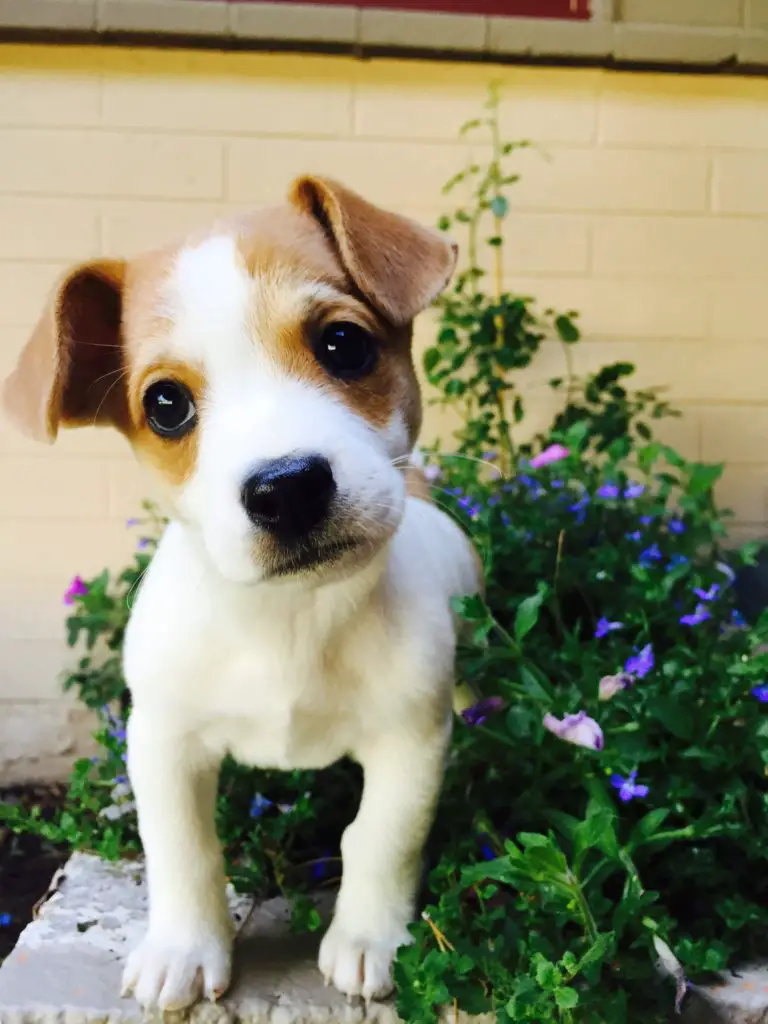
How To Take Care of a Puppy and 10 Key Points for Happy & Healthy Puppies
- Find a breed that matches your lifestyle
- Know the differences between adopting from a shelter/rescue and buying from a breeder. You’ll be able to weigh the benefits and cons of both options.
- When learning how to take care of a puppy, proper nutrition is crucial to a growing puppy. Protein is a priority and check out those calcium and phosphorus percentages as well.
- Be successful at house training your new puppy. It’s a change in your routine but your mindfulness and persistence will pay off. A puppy never intentionally eliminates in the wrong location.
- Incorporating physical and mental exercise into your puppy’s daily routine will make for a healthy and tired puppy.
- Know your puppies coat type and the grooming required to keep it healthy is part of learning how to take care of a puppy. Remember the importance of trimming nails and keeping your grooming sessions short.
- Carefully expose your puppy to your world! Positive exposures to sights and sounds in their environment will make them confident adults.
- When learning how to take care of a puppy, choose a veterinarian for your puppy. Be aware of the common major and minor illnesses that could befall a puppy.
- Learn how to take care of a puppy and help them prevent illnesses with the recommended vaccinations.
- Pet insurance is a budget-friendly way to afford routine care and emergency care for your puppy.
Please read our Legal Disclaimer

